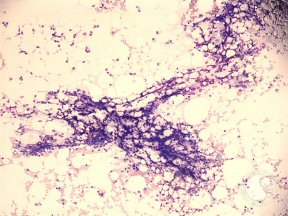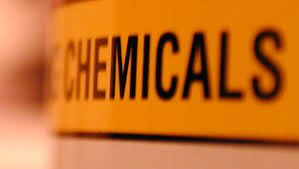Symptoms and Treatments of Aplastic Anemia
Aplastic Anemia
 The medical conditions in which bone marrow, along with its resident blood stem
cells, get damaged, consequently causing insufficiency of RBCs (red blood
cells); WBCs (white blood cells); and platelets is known as Aplastic Anemia.
This medical condition can occur in youngsters as well as elder people. The most
common reasons that cause this disease are excessive intake of drugs, exposure
to harsh and poisonous chemicals and radiation. Internal and external infections
are also known to be a reason behind the occurrence of Aplastic Anemia. However,
half of the Aplastic Anemia cases have emerged out to be due to hereditary
factor. The sure shot diagnosis of this ailment is the occurrence of fat in the
bone marrow where normal blood stem cells should have been present. Those
suffering from Aplastic Anemia have only fat detected in their bone marrow
biopsy in place of at least 30 percent to 70 percent of usual blood stem cells.
The proven and typical treatment of Aplastic anemia is immune-suppressive drugs,
usually anti-thymocyte globulin or anti-lymphocyte globulin. These two drugs are
amalgamated with cyclosporine and corticosteroids. Since Aplastic Anemia is
known to have an autoimmune constituent, the responsiveness of above mentioned
drug is nearly up to 70%. Those patients who are above the age of 30 years are
treated with Stem cell transplantation procedure. The medical conditions in which bone marrow, along with its resident blood stem
cells, get damaged, consequently causing insufficiency of RBCs (red blood
cells); WBCs (white blood cells); and platelets is known as Aplastic Anemia.
This medical condition can occur in youngsters as well as elder people. The most
common reasons that cause this disease are excessive intake of drugs, exposure
to harsh and poisonous chemicals and radiation. Internal and external infections
are also known to be a reason behind the occurrence of Aplastic Anemia. However,
half of the Aplastic Anemia cases have emerged out to be due to hereditary
factor. The sure shot diagnosis of this ailment is the occurrence of fat in the
bone marrow where normal blood stem cells should have been present. Those
suffering from Aplastic Anemia have only fat detected in their bone marrow
biopsy in place of at least 30 percent to 70 percent of usual blood stem cells.
The proven and typical treatment of Aplastic anemia is immune-suppressive drugs,
usually anti-thymocyte globulin or anti-lymphocyte globulin. These two drugs are
amalgamated with cyclosporine and corticosteroids. Since Aplastic Anemia is
known to have an autoimmune constituent, the responsiveness of above mentioned
drug is nearly up to 70%. Those patients who are above the age of 30 years are
treated with Stem cell transplantation procedure.
Symptomatic Signs of Aplastic Anemia
 One striking symptom of Aplastic Anemia is the striking of anemia with pallor
and malaise, coupled with palpitations and excessive sweating. There is
exaggerated decline in the count of platelets (also known as Thrombocytopenia)
that further leads towards possibility of bruising and internal bleeding. The
patients of Aplastic Anemia have also been seen suffering from Leukopenia where
the count of white blood cell falls dramatically. Under this condition, the
chances of catching infection rise unnaturally. Another symptomatic warning of
Aplastic Anemia is the reduction in the count of undeveloped red blood cells.
This is also known as reticulocytopenia. One striking symptom of Aplastic Anemia is the striking of anemia with pallor
and malaise, coupled with palpitations and excessive sweating. There is
exaggerated decline in the count of platelets (also known as Thrombocytopenia)
that further leads towards possibility of bruising and internal bleeding. The
patients of Aplastic Anemia have also been seen suffering from Leukopenia where
the count of white blood cell falls dramatically. Under this condition, the
chances of catching infection rise unnaturally. Another symptomatic warning of
Aplastic Anemia is the reduction in the count of undeveloped red blood cells.
This is also known as reticulocytopenia.
Causes of Aplastic Anemia
 As discussed earlier also, the likelihood of occurrence of this ailment
increases when there is excessive exposure to harsh chemicals and radiation,
excessive intake of narcotic drugs, occurrence of infection, along with
hereditary factor. Sometimes, in some of the cases, the cause of Aplastic Anemia
goes undetected. The chemicals and toxins that are known to be the causing
factor of Aplastic Anemia are benzene along with carbamazepine, chloramphenicol,
phenytoin, felbamate, and phenylbutazone. Those most of these drugs, such as
chloramphenicol and carbamazepine, have low probability of being a causal
factor. Aplastic Anemia is likely to be developed when human bodies are exposed
radioactive material or other radiation causing material. One significant
example of Marie Curie signifies that constant working in the close proximity of
radioactive material, and its unavoidable field, can take its toll on life. She
used to work unguarded for long hours under ionizing radiation, thus damaging
her health irreparably. Another known cause of Aplastic Anemia is an autoimmune
disorder. In this disorder white blood cells hit the bone marrow for their
damaging effect. Aplastic Anemia for short duration is the resultant of
parvovirus infection. This infection is caused by B19 virus and completely
terminates the production of red blood cell. As discussed earlier also, the likelihood of occurrence of this ailment
increases when there is excessive exposure to harsh chemicals and radiation,
excessive intake of narcotic drugs, occurrence of infection, along with
hereditary factor. Sometimes, in some of the cases, the cause of Aplastic Anemia
goes undetected. The chemicals and toxins that are known to be the causing
factor of Aplastic Anemia are benzene along with carbamazepine, chloramphenicol,
phenytoin, felbamate, and phenylbutazone. Those most of these drugs, such as
chloramphenicol and carbamazepine, have low probability of being a causal
factor. Aplastic Anemia is likely to be developed when human bodies are exposed
radioactive material or other radiation causing material. One significant
example of Marie Curie signifies that constant working in the close proximity of
radioactive material, and its unavoidable field, can take its toll on life. She
used to work unguarded for long hours under ionizing radiation, thus damaging
her health irreparably. Another known cause of Aplastic Anemia is an autoimmune
disorder. In this disorder white blood cells hit the bone marrow for their
damaging effect. Aplastic Anemia for short duration is the resultant of
parvovirus infection. This infection is caused by B19 virus and completely
terminates the production of red blood cell.
Diagnosis of Aplastic Anemia
The diagnosis of Aplastic Anemia has to be differentiated from its namesake
ailment pure red cell aplasia. While in aplastic anemia, the patient experiences
in reduction all elements of blood pure red cell aplasia results in diminishing
of only red blood cells only. A judicious diagnosis can be done with complete
examination of bone marrow examination. Apart from this, there are several other
tests also including renal function test, blood count, electrolyte test, liver
enzymes, test of vitamin B12, levels of folic acid, and thyroid function tests.
Other diagnostic tests that help in detecting Aplastic Anemia are –
- Bone marrow aspirate and biopsy
- Past record of iatrogenic exposure and cytotoxic chemotherapy
- Causes of transient bone marrow suppression
- X-rays
- CT scans
- Ultrasound imaging tests
- Detection of lymph nodes
- Kidneys’ function test
- Bones’ density test
- Chest X-ray
- History of infections
- Liver function tests
- Vitamin deficiency
Treatment
 The treatment of Aplastic Anemia
involves intake of daily medicine that would suppress the immune system. In
severe cases, transplantation of bone marrow is conducted as a potent cure. The
transplantation helps in replacement of depleting bone marrow cells with newer
ones that ae obtained from a matching donor. Amongst other treatments of
Aplastic Anemia, there is a short-term course of anti-thymocyte globulin or
anti-lymphocyte globulin along with cyclosporine. This therapy regulates the
body’s immunity. Some patients are also administered with mediocre chemotherapy
involving medication like vincristine and cyclo-phosphamide. The nausea caused
by chemotherapy is combated by steroids. The treatment of Aplastic Anemia
involves intake of daily medicine that would suppress the immune system. In
severe cases, transplantation of bone marrow is conducted as a potent cure. The
transplantation helps in replacement of depleting bone marrow cells with newer
ones that ae obtained from a matching donor. Amongst other treatments of
Aplastic Anemia, there is a short-term course of anti-thymocyte globulin or
anti-lymphocyte globulin along with cyclosporine. This therapy regulates the
body’s immunity. Some patients are also administered with mediocre chemotherapy
involving medication like vincristine and cyclo-phosphamide. The nausea caused
by chemotherapy is combated by steroids.
Diseases & Conditions
Top Lists:
Top 10 Most Common Genetic Disorders
Top 15 Most Disturbing Skin Conditions
10 Unusual Phobias
Informational:
Diverticular Disease and Diverticulitis
What is Turner Syndrome and Why Does it Affect Only Females?
Alice in Wonderland Syndrome and How to Treat the Symptoms
Herniated Disc: Symptoms and Treatments
Pinch Nerve: The Cause of Remote Pain
Dealing With a Child Who Has a Fever
How Unhealthy Diet Could Trigger Inflammatory Arthritis
Phobias: Understanding How They Develop and Treatments
Depression Facts, Symptoms & Treatment
Earaches - Causes and Treatments
Symptoms of Borderline Personality Disorder and How to Deal with It
Seasonal Affective Disorder: Does Light Therapy Help?
What Really Causes Dandruff and How Can You Treat the Symptoms
Treating Plantar Fasciitis or Heel and Arch Pain
Symptoms and Treatments of Aplastic Anemia
Using Sclerotherapy to Get Rid of Varicose Veins
Are the Side Effects of HGH Supplements Worth It?
ADD/ADHD Symptoms and Treatment
What are the Options for Hair Loss Treatments
Options for Frontal Hair Loss Treatment |